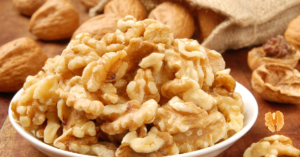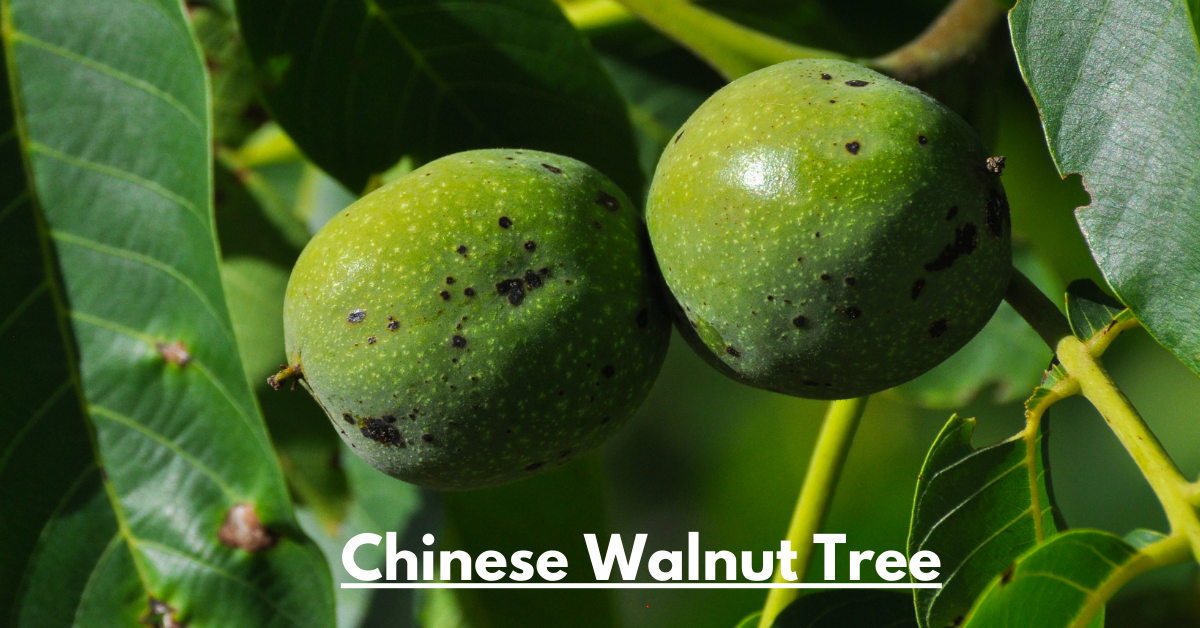Chinese Walnut Tree: The Chinese walnut tree, empirically alluded to as Jungian sibilant, is a ponder of nature regarded for its social significance, culinary delights, and therapeutic houses. In this comprehensive manual, we dive into the tricky information of this grand tree, investigating its roots, features, development hones, and the heap benefits it gives.
Origins and Distribution
Hailing from the Graceland circle of relatives, the Chinese walnut tree is innate to the hilly regions of China, where it flourishes in calm climates. It is moreover watched in nearby dull nations like Bhutan, Nepal, and India, where it has been developed for hundreds of years. The roots and conveyance of any given marvel are frequently multifaceted and complex, impacted by a heap of chronicled, social, topographical, and sociology-economic components. Let’s comprehensively dig into this:
Origins
- Historical Setting: Beginnings frequently follow back to authentic occasions, such as movements, successes, colouration, or the improvement of technology.
- Cultural Roots: Many wonders have roots profoundly inserted in the societies of particular locales or communities. These social roots shape convictions, hones, and conventions that may impact the spread and advancement of the wonder over time.
- Geographical Impacts: Topography is critical in influencing the accessibility of assets, climate designs, and physical boundaries that can encourage or prevent the spread of a phenomenon.
- Economic Variables: Financial conditions, such as exchange courses, showcase requests, and mechanical improvement, can also contribute to the development and conveyance of phenomena.
- Technological Progressions: The advancement and appropriation of modern advances regularly drive alter and advancement, driving the creation and dispersal of contemporary phenomena.
Distribution
- Global vs. Territorial: A few wonders have a worldwide reach, whereas others are more restricted to particular districts or communities. The conveyance design can shift based on social fondness, financial improvement, or verifiable connections.
- Cultural Impact: Social components intensely impact dissemination designs. Shared dialects, religions, or conventions can encourage the spread of marvels inside social spheres.
- Migration and Diaspora: Human movement, whether constrained or intentional, is noteworthy in spreading wonders over distinctive locales. Diaspora communities frequently maintain associations with their country, contributing to the spread of social norms and traditions.
- Urban vs Country: Dispersion may change between urban and country zones due to contrasts in populace thickness, framework, and resources.
- Digital Network: Modern innovations have changed the dissemination of marvels. The web and social media empower the fast dissemination of thoughts, patterns, and social hones over endless distances.
- Environmental Variables: Common scenes and environmental conditions can impact dissemination designs. For example, certain rural hues may be more predominant in regions with particular soil types or climate conditions.
- Political Boundaries: Political borders can make boundaries spread marvels due to contrasts in controls, administration structures, or political relations between countries.
feature of the Chinese Walnut Tree

The Chinese walnut tree is a deciduous hardwood species that can reach towering statures of as much as 30 meters. Its one-of-a-kind compound clears out and incorporates five to nine flyers, organised on the other hand along the stem. The tree bears male and lady vegetation, with the young lady plants giving way to the prize’s perfection – walnuts.
Cultivation and Growth
Cultivating Chinese walnut bushes requires perseverance and meticulous care. They choose well-tired soil with a pH degree beginning from 6.0 to 7.5 and sufficient sunshine for most great growth. Engendering is commonly executed through uniting or seed planting, with the latter requiring stratification to hinder torpidity. It more often than not takes 4 to 5 years for a Chinese walnut tree to begin bearing perfection, with total development accomplished at around 10 to 15 years.
Harvesting and Processing
Harvesting Chinese walnuts is an extensive strategy that incorporates expecting the green husks to turn brown and part open, uncovering the encased nuts. Once gathered, the walnuts are dried and cured to brighten their enhance and expand rack ways of life. They may be bolstered on shining, broiled, or coordinated into various culinary dishes, from servings of mixed greens to desserts.
Health Benefits and Culinary Uses
Chinese walnuts aren’t the most successful prizes for their wealthy buttery enhancement but for plenty of wellness benefits. They are full of imperative supplements like omega-3 greasy acids, cancer prevention agents, and vitamins, which commit to coronary heart well-being, intellect highlight, and, by and large, properly-being. In conventional Chinese medication, walnut bits are utilised to bargain with afflictions, such as obstruction, asthma, and skin situations.
Health Benefits
- Nutrient Thickness: Culinary herbs like basil, parsley, cilantro, and thyme are rich in basic vitamins, minerals, and cancer prevention agents, contributing to overall well-being. These supplements support different substantial capacities, counting resistance framework work, bone well-being, and vitality metabolism.
- Antioxidant Properties: Numerous culinary herbs are stuffed with cancer prevention agents, such as enhancing, poly phones, and adenoids, which help kill destructive free radicals in the body. Traditional mutilation of antioxidant-rich herbs may diminish the chance of inveterate maladies like heart disease, cancer, and regenerative disorders.
- Anti-inflammatory Impacts: A few herbs, like ginger, turmeric, and rosemary, have powerful anti-inflammatory properties. Inveterate irritation is connected to various well-being issues, including joint pain, diabetes, and circulatory illness. Including anti-inflammatory herbs in your diet may help decrease irritation and its related risks.
- Digestive Help: Certain herbs, including peppermint, fennel, and chamomile, have been traditionally used to improve stomach-related well-being. They may help lighten symptoms like bloating, gas, heartburn, and sickness. These herbs can also invigorate absorption, advance the bile stream, and relieve gastrointestinal discomfort.
- Heart Well-being: Herbs like garlic, oregano, and thyme have illustrated circulatory benefits, bringing down blood weight, diminishing cholesterol levels, and making strides in blood vessel work. Normal titillation of these herbs as a portion of an adjusted slim-down may contribute to a solid heart and decrease the chance of heart disease.
- Blood Sugar Control: Certain herbs, such as cinnamon and greenback, have appeared to make a difference in direct blood sugar levels. They may move forward affront affability, improve glucose digestion system, and diminish the chance of creating sort two diabetes when consolidated into a solid count of calories and lifestyle.
- Immune Back: Numerous culinary herbs have immune-boosting properties due to their high content of vitamins, minerals, and biodynamic compounds. Herbs like garlic, echidna, and elderberry have been traditionally used to support the safe framework and may help avoid pollutants or diminish their severity.
Culinary Uses
- Flavour Improvement: Culinary herbs add profundity, complexity, and smell to different dishes, upgrading their taste and offer. Whether new or dried, herbs like basil, thyme, rosemary, and cilantro confer interesting flavours that complement a wide range of cuisines, from Italian and Mediterranean to Asian and Latin American.
- Versatility: Culinary herbs are inconceivably flexible and can be used in an assortment of dishes, including soups, stews, and servings of mixed greens, sauces, marinades, dressings, and refreshments. They can be combined at diverse stages of cooking, from flooring and embellishing to implanting oils and vinegar, permitting unending culinary creativity.
- Garnishes: New herbs make lovely and flavour garnishes, including visual requests and a burst of freshness to plated dishes. Sprigs of parsley, dill, or cilantro can raise the introduction of soups, servings of mixed greens, primary courses, and appetisers, making them more outwardly engaging and delicious.
- Infusions and Refreshments: Culinary herbs are commonly used to flavour fluids like water, vinegar, oil, or liquor, conferring their flavour and smell. Homegrown implantations can be enjoyed as teas, cocktails, or enhancing operators for hand-crafted syrups and tonics, giving a reviving and invigorating alternative to sugary drinks.
- Preservation: Herbs can be protected by drying, solidifying, or making herb-infused oils and vinegar, permitting you to appreciate their flavour and benefits year-round. Dried herbs can be put away in airtight holders and added to dishes as required, whereas solidified herbs can be portioned and used straight from the cooler in cooking and baking.
- Culinary Combinations: Testing with diverse herb combinations can hoist the flavour of your dishes and motivate unused culinary exposure. For illustration, matching basil with tomatoes and mozzarella in a Caprice serving of mixed greens or combining mint and cilantro in a reviving salsa Verde adds complexity and profundity to the enhanced profile.
Environmental and Financial Impact
The development of Chinese walnut trees plays an imperative part in economic agribusiness and provincial vocations. Beyond their monetary noteworthiness as a coin trim, these timbers contribute to soil preservation, biodiversity security, and carbon sequestration, making them beneficial resources in battling climate trade and advancing natural stewardship.
FAQs About Chinese Walnut Trees
Q. Are Chinese walnut bushes intense to develop?
Chinese walnut trees require exact development features and might take a long time to bear natural products, but with the right care and interest, they seem to flourish in suitable environments.
Q. Can Chinese walnuts be developed in the exterior of China?
Chinese walnut bushes can be grown in districts with comparable climatic features, incorporating mild zones with adequately drained soil and ample sunlight.
Q. Are there elite shapes of Chinese walnut trees?
Yes, there are various assortments of Chinese walnut timber, each with its unique features in terms of estimate, taste, and increment behaviour.
Q. How long does it take for Chinese walnut timber to bear fruit?
Chinese walnut trees commonly start bearing fruit after four to five years of increment, with total adulthood lasting around ten to fifteen years.
Conclusion
In conclusion, the Chinese walnut tree declares nature’s bounty, conferring riches of benefits to individuals and the environment. Whether adored as a nutritious nibble, a flavour component, or an image of flexibility and wealth, the Chinese walnut tree remains an adored brand of control and vitality in the homegrown worldwide.

